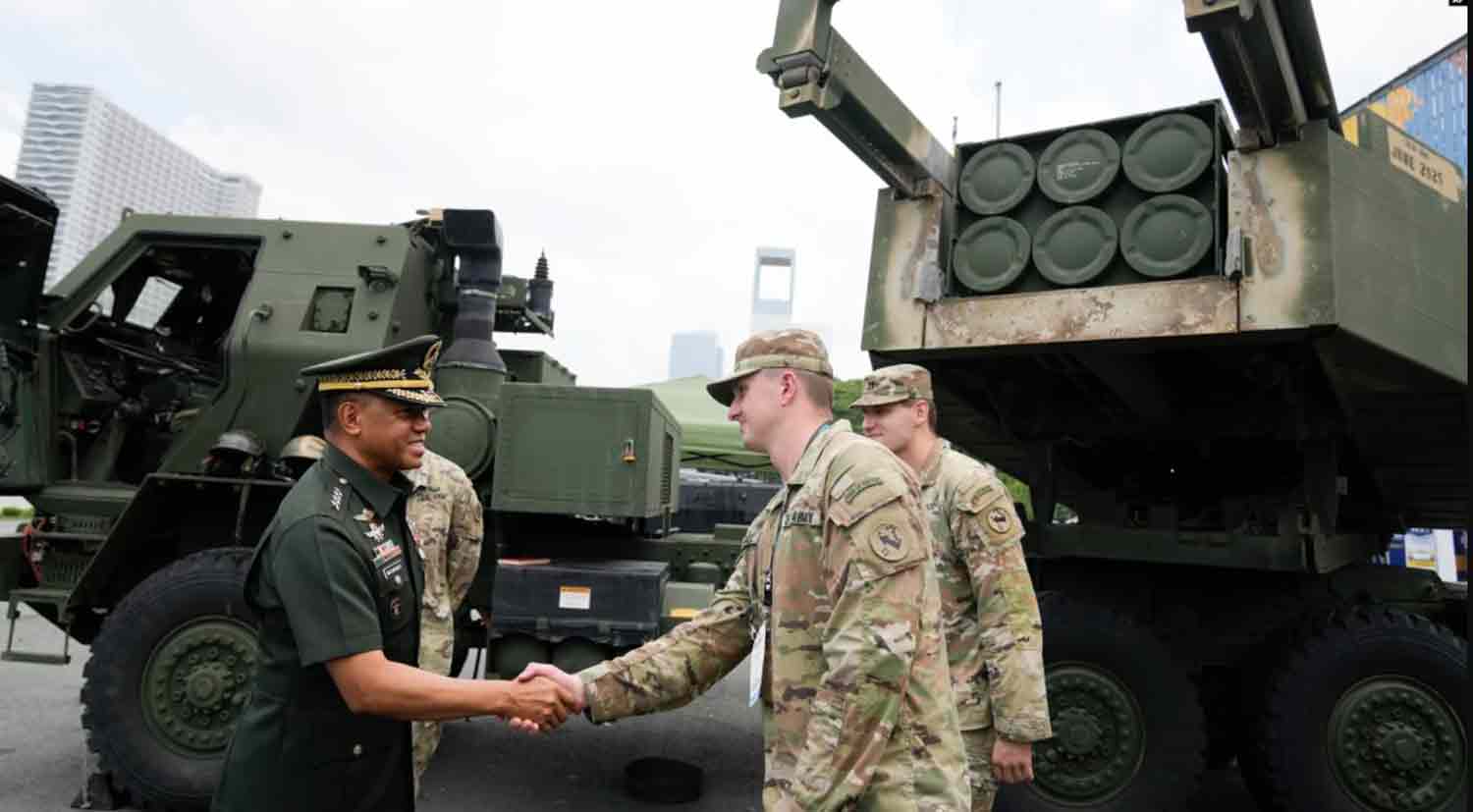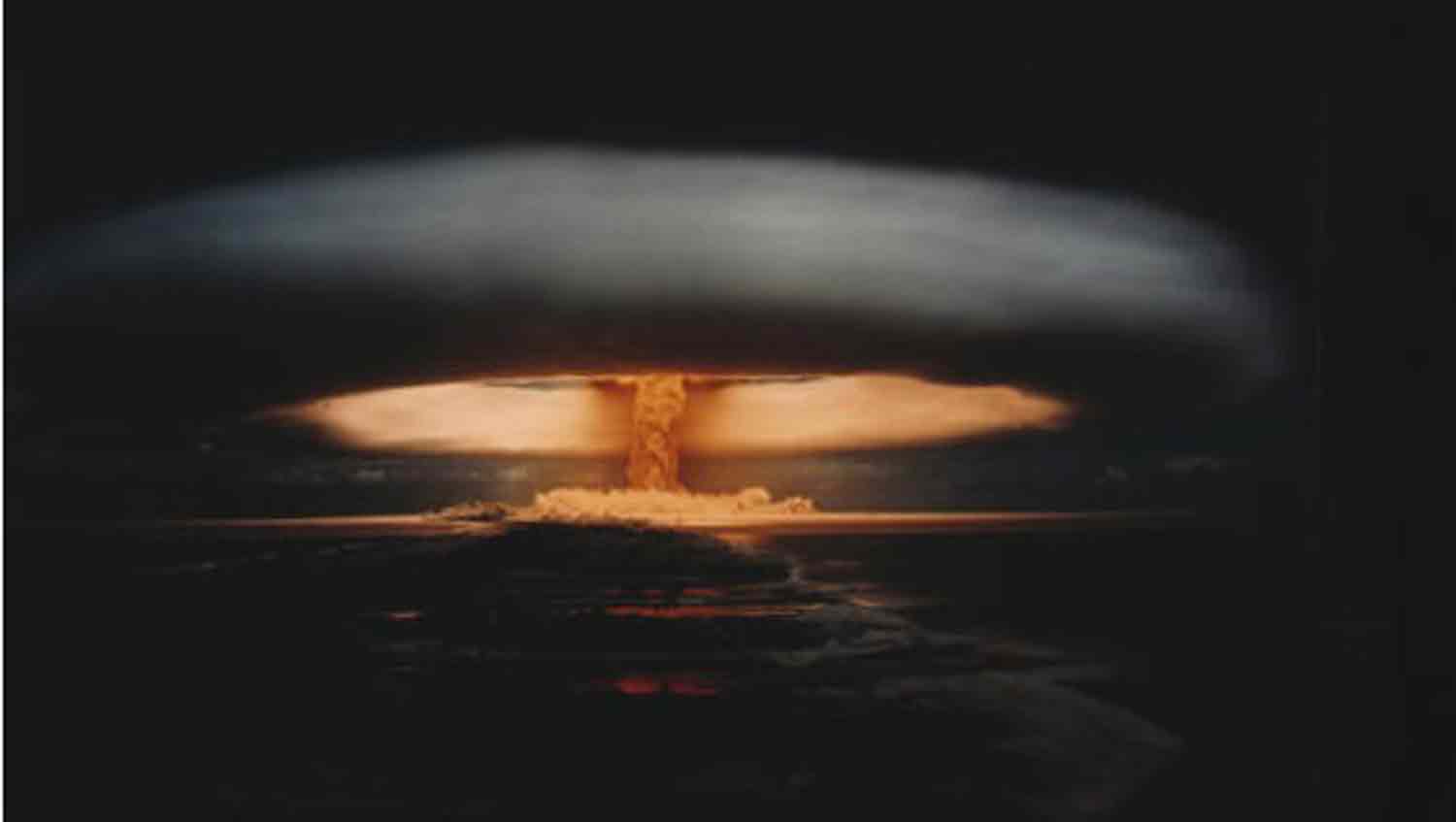A U.S. initiative to position advanced missile systems on a Japanese island chain near Taiwan is eliciting strong reactions from both China and its ally Russia.
According to a report by Kyodo News on Sunday, which referenced unnamed sources, the United States is formulating a collaborative military strategy with Japan to deploy High Mobility Artillery Rocket Systems (HIMARS) and additional weaponry to Japan’s Nansei islands. This plan is anticipated to be finalized by December.
The island chain extends from Japan’s main islands to within 200 kilometers of Taiwan and includes Okinawa, which hosts a significant U.S. military presence. The missiles could potentially be utilized to defend Taiwan in the event of a Chinese invasion, as Beijing regards the self-governing island as a breakaway province.
This initiative marks the first joint operation between the U.S. and Japan aimed at preparing for a potential conflict between Taiwan and China. It will involve the deployment of a U.S. Marine Corps regiment equipped with HIMARS and the establishment of temporary bases on the Nansei islands for their stationing, as reported by Kyodo. The Japan Self-Defense Forces are expected to assist with logistics, including fuel and ammunition.
A spokesperson for the Chinese foreign ministry condemned the proposed plan during a press conference on Monday, stating, “China opposes relevant countries using the Taiwan issue as a pretext to enhance military deployments in the region, escalate tensions and confrontations, and disrupt regional peace and stability.”
In a more forceful response, Russian Foreign Ministry spokesperson Maria Zakharova warned that Russia would take “necessary and proportionate steps” to bolster its defense capabilities in reaction to the deployment, as reported by the Russian news agency Tass on Wednesday.
“We have consistently cautioned the Japanese side that if U.S. medium-range missiles are stationed on its territory as a result of this cooperation, it will pose a genuine threat to our national security,” Zakharova stated.
Russian Deputy Foreign Minister Sergey Ryabkov has urged Washington to reconsider its missile deployment in the Asia-Pacific region, warning that Moscow may respond by stationing shorter- and intermediate-range missiles in Asia.
Earlier in November, President Vladimir Putin emphasized that China is a key ally of Russia, asserting that “Taiwan is part of China.” He described China’s military exercises near Taiwan as a “completely reasonable policy” in light of escalating tensions from Taipei.
Although there is no formal military treaty between Russia and China, both leaders, Putin and Xi Jinping, have referred to their relationship as a “no limits” partnership. The United States has accused China of aiding Russia’s military efforts in Ukraine.
During a press conference at the G7 meeting in Italy, U.S. Secretary of State Antony Blinken stated that China’s support for Russia’s defense sector is enabling continued aggression against Ukraine.
U.S.-Japan missile initiative
Regarding the U.S.-Japan missile initiative, analysts suggest that the deployment of HIMARS in the region is primarily focused on safeguarding Taiwan from potential threats posed by Chinese naval forces. Michael O’Hanlon, a senior fellow at the Brookings Institution, noted that the primary objective of HIMARS would be to enhance anti-ship capabilities and ensure the protection of the island and its bases.
Navy Adm. Samuel Paparo, the commander of the U.S. Indo-Pacific Command, stated at a recent Brookings Institution forum that China conducted its largest invasion rehearsal of Taiwan this past summer, involving 152 vessels. He emphasized the necessity for the U.S. to be adequately prepared.
The Chinese People’s Liberation Army (PLA) Navy boasts the largest naval fleet globally, comprising over 370 ships and submarines, while the U.S. operates approximately 290 vessels.
In light of a potential Chinese invasion, Timothy Heath, a senior international defense researcher at the RAND Corporation, noted that HIMARS stationed on the Nansei Islands could effectively target amphibious landing ships, destroyers, and other PLA Navy vessels approaching from the north, as well as concentrations of PLA troops on beaches near Taipei.
Heath further remarked that the deployment of these weapon systems indicates that the U.S. and its allies are drawing valuable lessons from the conflict in Ukraine, where HIMARS have been successfully utilized against Russian forces.
Additionally, the U.S. is planning to position the Multi-Domain Task Force’s (MDTS) long-range firing units in the Philippines, as reported by Kyodo news on Sunday. The MDTS incorporates HIMARS as its long-range firing capabilities.
The introduction of HIMARS to the Nansei Islands and the deployment of long-range artillery units in the Philippines will increase the strategic costs for China, according to Ryo Hinata-Yamaguchi, an associate professor at the Tokyo International University Institute for International Strategy and a nonresident senior fellow at the Atlantic Council’s Indo-Pacific Security Initiative.
He emphasized that both locations are crucial for countering China’s assertive actions not only in the Taiwan Strait and East China Sea but also regarding its broader ambitions in the Pacific. However, he anticipates that China will respond by bolstering its military preparedness and engaging in more aggressive operations in the years ahead.
Taiwan, the Philippines, Japan, and Indonesia form what China refers to as the first island chain, which could potentially restrict its military access to the Pacific.
U.S. Defense Secretary Lloyd Austin recently wrapped up a nine-day visit to the Indo-Pacific, during which he held discussions with defense leaders from several regional nations, including Japan, the Philippines, Australia, and South Korea.
During these discussions, Japan committed to enhancing its involvement in annual trilateral amphibious exercises with the U.S. and Australia, while the Philippines agreed to strengthen military intelligence cooperation by signing a General Security of Military Information Agreement (GSOMIA) with the United States.
Discover more from Defence Talks | Defense News Hub, Military Updates, Security Insights
Subscribe to get the latest posts sent to your email.





